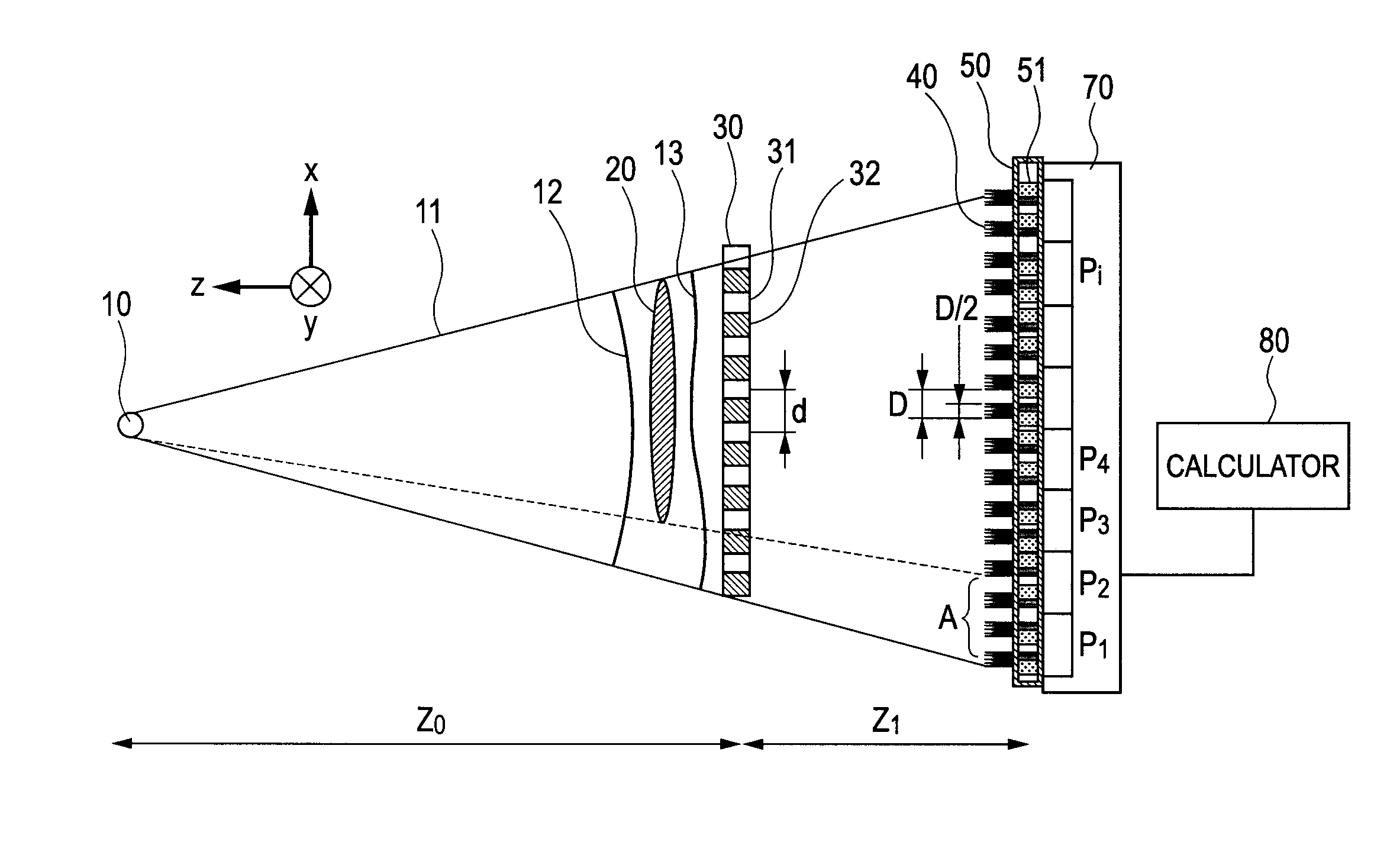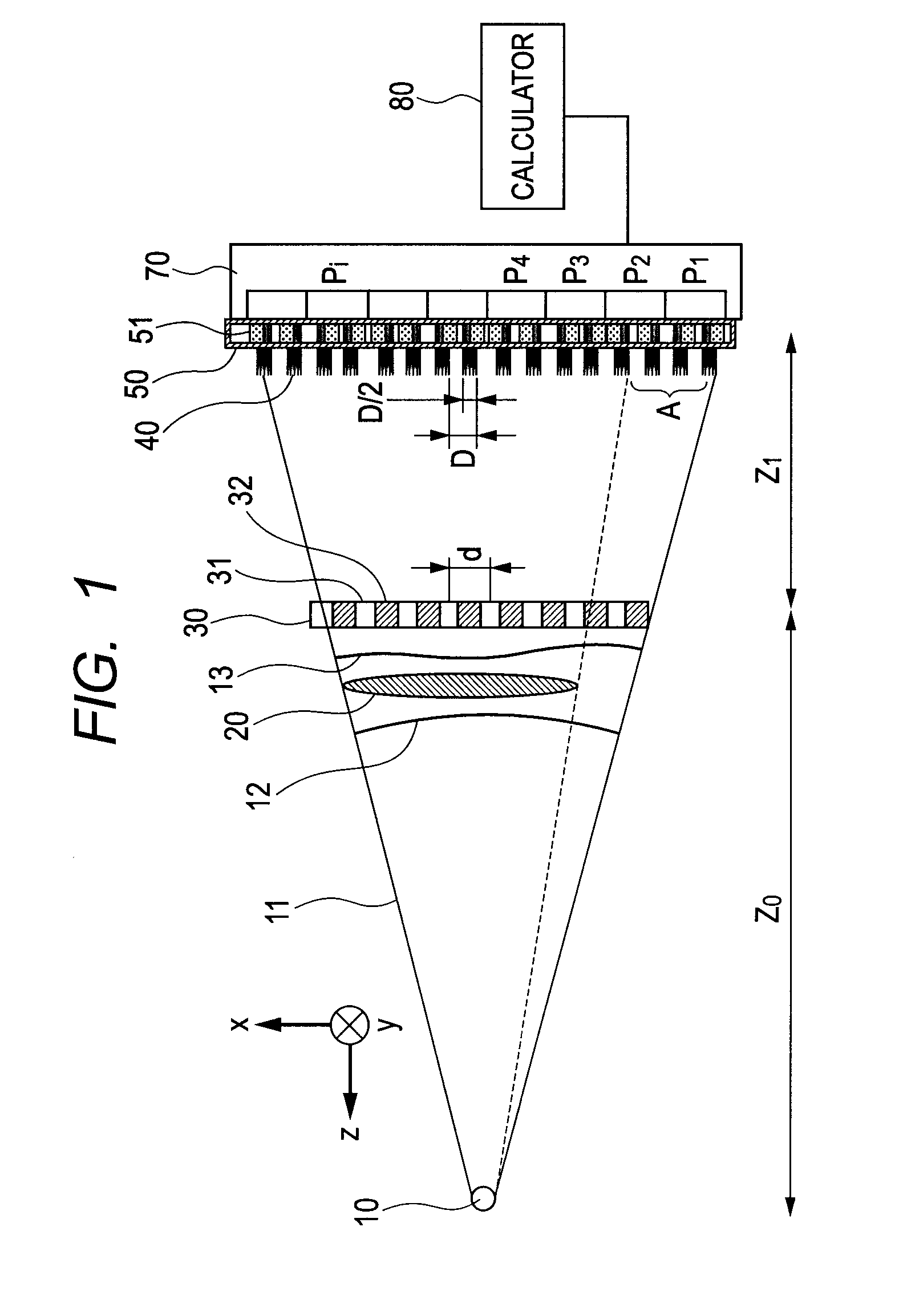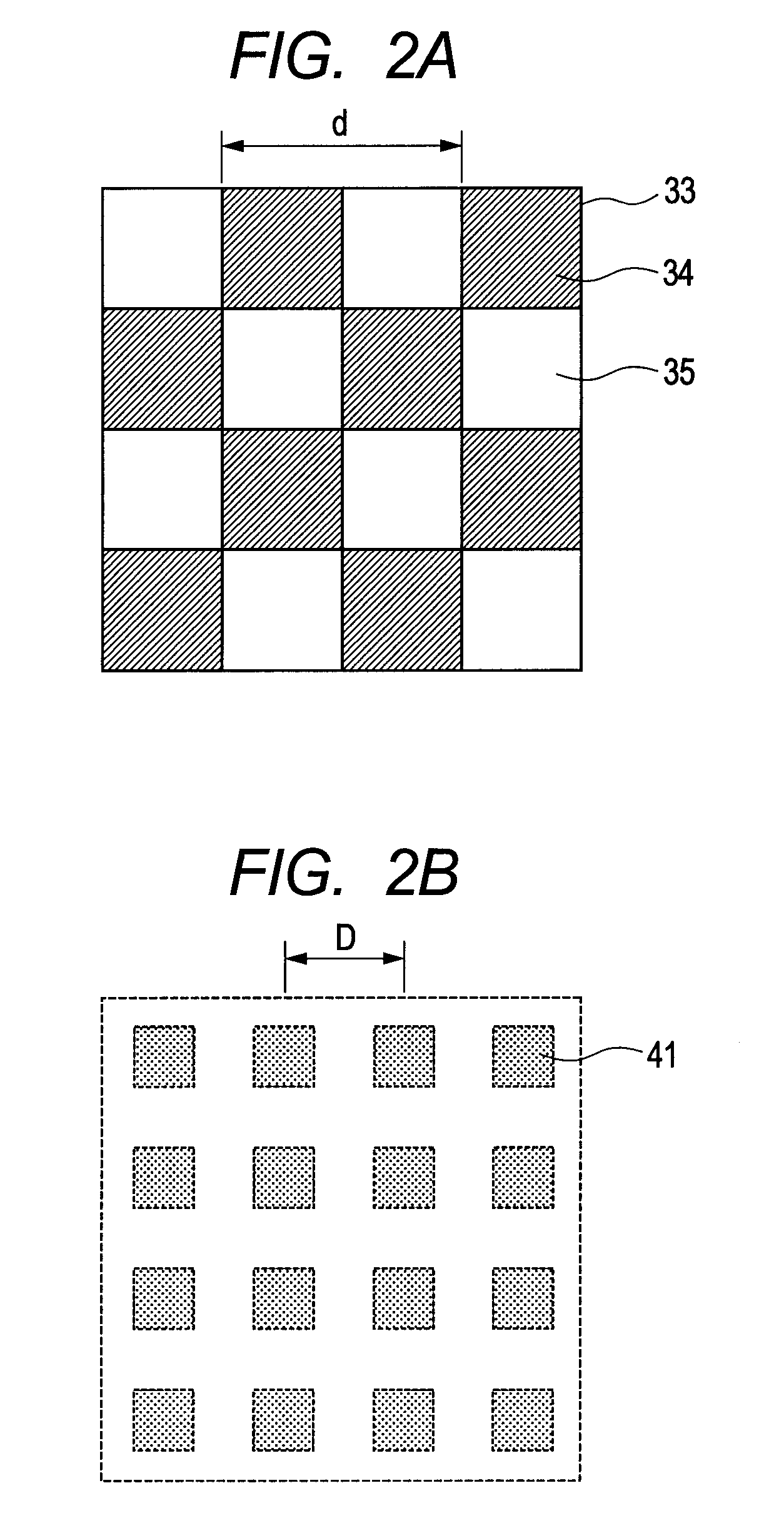X-ray imaging apparatus
a technology of x-ray imaging and apparatus, which is applied in the direction of imaging devices, instruments, and material analysis using wave/particle radiation, can solve the problems of difficult x-ray absorption contrast methods, and achieve the effect of reducing the influence of a transmissivity distribution and exceptional quality
- Summary
- Abstract
- Description
- Claims
- Application Information
AI Technical Summary
Benefits of technology
Problems solved by technology
Method used
Image
Examples
example 1
[0043]As an example 1, a construction of the X-ray imaging apparatus to which the present invention is applied will be described with reference to FIG. 1.
[0044]This drawing illustrates an X-ray source 10 which radiates an X-ray, an X-ray 11 which is radiated by the X-ray source 10, and an object 20 to be detected which is to be measured by the X-ray imaging apparatus. Further, this drawing illustrates a first grating 30 which is used to form a periodic bright-dark pattern by the transmitting X-ray, a bright section 40 of the bright-dark pattern formed by the first grating 30, and a second grating 50 which blocks a part of the bright section 40 of the bright-dark pattern.
[0045]Furthermore, this drawing illustrates an X-ray intensity detector 70 which takes and detects an X-ray image received, and pixels Pi (i=1, 2, 3, . . . ) of the X-ray intensity detector 70.
[0046]Furthermore, this drawing illustrates a calculator 80 which calculates a differential wavefront and a transmitted wavef...
example 2
[0082]An example 2 will be described with reference to FIGS. 2A, 2B, 3A, 3B, 4A and 4B.
[0083]The first grating in this example is a phase modulation grating of a phase difference π which is two-dimensionally and periodically arranged (hereinafter, called a two-dimensional n phase grating).
[0084]Therefore, also the second grating has a two-dimensional periodic structure. Since the constituent elements other than the first grating and the second grating are the same as those in the example 1, these elements respectively have the same corresponding numerals as those illustrated in FIG. 1.
[0085]FIG. 2A is the diagram which is obtained by viewing a part of the first grating in this example from the side of the X-ray source. In the drawing, a first grating 33 includes portions 34 and 35 of which the transmission phases are mutually different by n and which are periodically arranged checkerwise.
[0086]The distance Z0 between the X-ray source and the first grating and the distance Z1 between...
example 3
[0116]An example 3 will be described with reference to FIGS. 5A, 5B, 6A and 6B.
[0117]Here, the blocking direction of the second grating in this example is different from that in the example 2, but other constituent elements are the same as those in the example 2.
[0118]FIG. 5A illustrates the structure of the second grating which is applied in a case where the period D is equivalent to the pixel period p of the X-ray intensity detector 70, and a positional relation between the blocking section of the second grating and the pixel of the X-ray intensity detector 70.
[0119]Here, respective portions Pij (i, j=1, 2, 3, . . . ) correspond to the pixels of the X-ray intensity detector 70, in which the borders of the pixels are indicated by the dotted lines, and a portion 56 corresponds to the second grating.
[0120]A hatched portion 57 corresponds to the blocking section of the second grating 56, and a non-hatched portion corresponds to the light transmitting section. The blocking sections and...
PUM
| Property | Measurement | Unit |
|---|---|---|
| transparency | aaaaa | aaaaa |
| density | aaaaa | aaaaa |
| phase contrast | aaaaa | aaaaa |
Abstract
Description
Claims
Application Information
 Login to View More
Login to View More - R&D
- Intellectual Property
- Life Sciences
- Materials
- Tech Scout
- Unparalleled Data Quality
- Higher Quality Content
- 60% Fewer Hallucinations
Browse by: Latest US Patents, China's latest patents, Technical Efficacy Thesaurus, Application Domain, Technology Topic, Popular Technical Reports.
© 2025 PatSnap. All rights reserved.Legal|Privacy policy|Modern Slavery Act Transparency Statement|Sitemap|About US| Contact US: help@patsnap.com



